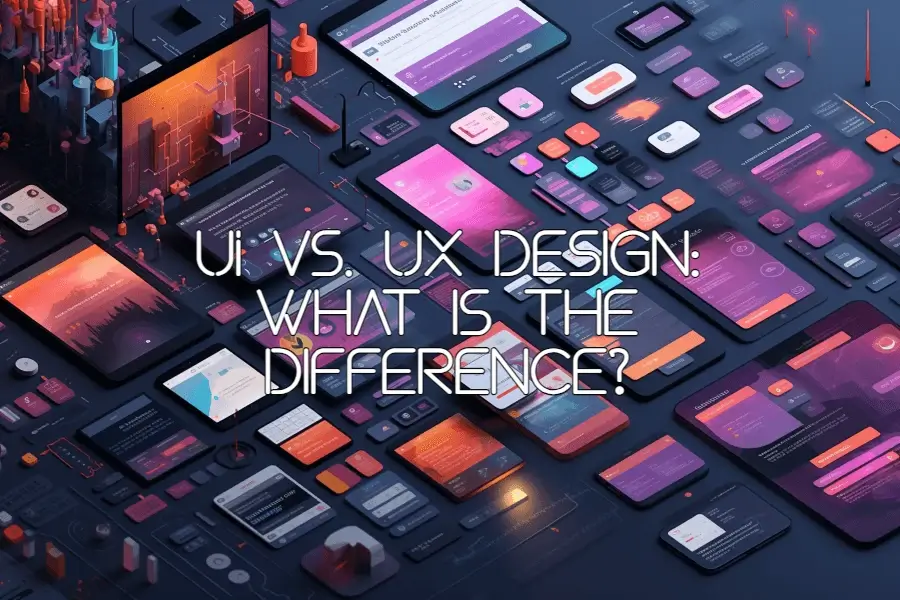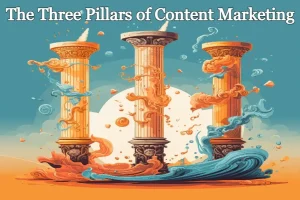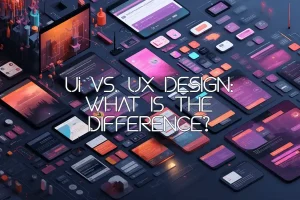UI vs. UX Design, why is it becoming more and more important? In this short guide I explain it all. In today’s digital age, businesses compete for the attention of tech-savvy consumers. Understanding user interface (UI) and user experience (UX) is crucial. These two words can be confusing, but they have different roles in creating a good customer experience. To put it simply, “UX is what you feel, UI is what you see.” In this blog post, we’ll talk about the world of UI/UX design. We’ll explain how they’re different and why they matter for a great customer experience.
Highlights Summary
- User Interface (UI) is the aesthetic and interactive aspect of a product or application
- User Experience (UX) deals with how users perceive and interact with a product or service
- In an ideal world, you should strive for both exceptional UI and UX
- UI captures attention, while UX determines whether users will stay or leave
UI: The Visual Facade
User Interface (UI) is the aesthetic and interactive aspect of a product or application. It encompasses everything a user can see and touch, from the color scheme, typography, and button design to the layout and overall visual presentation. UI designers focus on making the interface visually appealing, intuitive, and easy to navigate.
Think of UI as the exterior of a house; it’s the facade that welcomes visitors and sets their initial impressions. A well-designed UI can capture attention, create a positive first impression, and even make users want to explore further. However, UI alone cannot guarantee a satisfying user experience.
UX: The Emotional Connection
User Experience (UX) goes beyond the surface. It deals with how users perceive and interact with a product or service at every touchpoint. UX designers like me, study how users interact with a product to make it enjoyable and seamless.
In essence, UX is about what users feel when they interact with your product. It encompasses factors like usability, efficiency, accessibility, and overall satisfaction. A good UX design makes it easy and enjoyable for users to achieve their goals. This creates a stronger connection between the user and the product.
The Relationship Between UI vs. UX
While UI vs. UX are distinct, both communicate and connect with each other. Here at Pugu Digital we understand that. A visually stunning UI can initially attract users, but it’s the UX that keeps them engaged and coming back for more. UX provides the substance beneath the surface, ensuring that users not only have a pleasant visual experience but also a functional one.
In essence, UI is the “prom dress” that a product wears, while UX is the foundation that makes it work. Imagine a scenario where a product boasts a beautiful UI but falls short on usability and satisfaction – it’s like having a stunning prom dress that’s uncomfortable to wear. Users may be initially captivated, but their excitement will wane as they struggle to achieve their goals.
Conversely, a product with exceptional UX but a lackluster UI can still succeed. The classic example here is Winamp, a media player from the past. While it may not have had the most visually appealing UI, its user experience was excellent for its time, and it garnered a loyal following.
UI vs. UX: The Ideal Combination
In an ideal world, you should strive for both exceptional UI and UX. They are the yin and yang of customer experience. They work in harmony to create a product that not only looks great but also functions and connects with users. A product with this winning combination not only attracts users but also retains them, fostering brand loyalty and advocacy.
In conclusion, UI vs. UX are two sides of the same coin, both integral to creating a successful customer experience. UI captures attention and sets the stage, but it’s UX that truly defines the journey and determines whether users will stay or leave. So, remember, while UI may be what you see, UX is what you feel. Together, they are the keys to unlocking a product’s full potential in today’s competitive digital landscape.



















